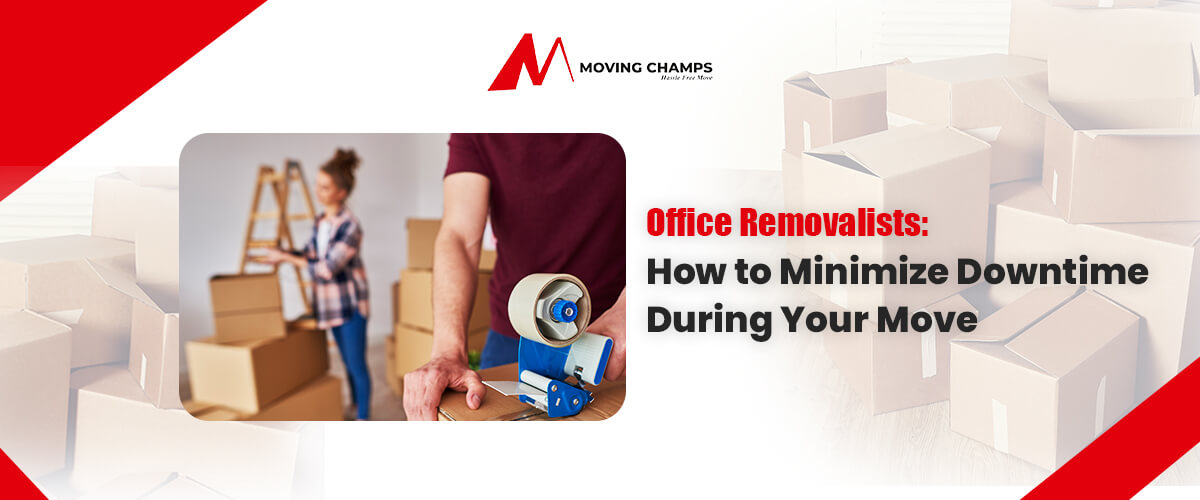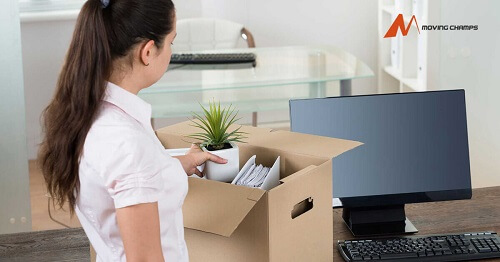Office Removalists: How to Minimize Downtime During Your Move
Choosing The Right Office Removalists For a Smooth Transition
Relocating an office can be a daunting task, especially when trying to balance business continuity with the logistics of the move. Whether you’re moving your office within Sydney, transitioning to Melbourne, or expanding to Brisbane, minimizing downtime during your move is crucial to maintaining productivity and ensuring a smooth transition. This comprehensive guide will provide essential tips on how to minimize downtime during your office move with the help of Professional Office Removalists.
Why Minimizing Downtime is Important
1. Business Continuity
One of the main reasons to minimize downtime is to ensure business continuity. Any disruption can lead to loss of productivity, missed deadlines, and potential revenue loss. Keeping your operations running smoothly during a move is essential to maintaining your company’s reputation and customer satisfaction.
2. Employee Productivity
Minimizing downtime during your office removal helps maintain customer satisfaction. Ensuring that your clients experience minimal disruption in service will preserve your professional relationships and trust.
Planning Your Office Move
1. Start Planning Early
Begin planning your office move as early as possible. Ideally, start the planning process at least six months before the move date. Early planning gives you ample time to organize every detail and address any potential issues that may arise.
2. Create a Detailed Moving Plan
Develop a comprehensive moving plan that includes timelines, task assignments, and a budget. Break down the plan into manageable steps, such as:
- Creating a moving timeline
- Assigning a move coordinator
- Scheduling moving services
- Notifying stakeholders and clients
- Updating business addresses
3. Communicate with Employees
Effective communication with your employees is essential for a smooth move. Keep your staff informed about the move’s timeline, expectations, and their specific responsibilities. Hold regular meetings to update them on progress and address any concerns.
4. Hire Professional Office Removalists
Hiring professional office removalists can significantly reduce downtime. Experienced office removalists specialize in office relocations and can handle all aspects of the move, from packing and transportation to setup and installation at the new location.

Choosing The Right Office Removalists
1. Research and Recommendations
Start by researching reputable office removalists in your area. Look for companies with positive reviews and ratings. Ask for recommendations from other businesses that have recently moved.
2. Get Multiple Quotes
Obtain quotes from at least three different removalist companies. Ensure the quotes include all services and potential additional charges. Comparing quotes will help you find a service that fits your budget and needs.
3. Check Credentials
Verify that the removalist company is licensed and insured. In Australia, reputable office removalists should be registered with the Australian Furniture Removers Association (AFRA). This ensures that they adhere to industry standards and regulations.
4. Read Reviews and Testimonials
Reading customer reviews and testimonials provides insight into the company’s reliability and quality of service. Look for reviews that mention punctuality, professionalism, and the condition of belongings upon arrival.
5. Discuss Special Requirements
If you have special requirements, such as moving valuable equipment or sensitive documents, discuss these with the removalist company beforehand. Ensure that they have the necessary expertise and equipment to handle your specific needs.

Preparing for the Move
1. Inventory and Audit
Conduct a thorough inventory and audit of all office equipment, furniture, and supplies. Identify items that need to be moved, discarded, or replaced. This process helps you understand the scope of the move and ensures nothing is overlooked.
2. Declutter and Downsize
Before the move, declutter and downsize your office. Get rid of unnecessary items, old furniture, and outdated equipment. This not only reduces the volume of items to be moved but also helps create a more organized and efficient workspace in your new location.
3. Label Everything
Clearly label all boxes and equipment with their contents and destination. Use color-coded labels or stickers for different departments or areas of the new office. This makes the unpacking process more organized and efficient.
4. Pack Smartly
Use high-quality packing materials to protect your office equipment and furniture. Pack items systematically, starting with non-essential items and moving towards essential equipment closer to the move date. Ensure that fragile items are packed securely to avoid damage.
5. Backup Important Data
Ensure that all important data is backed up before the move. This includes digital files, documents, and records. Having a backup ensures that no critical information is lost during the transition.

Moving Day Tips
1. Coordinate with Removalists
Maintain open communication with your office removalists on moving day. Provide clear instructions and address any concerns promptly. Ensure that the movers have access to both the old and new office locations.
2. Stagger the Move
If possible, stagger the move over several days to minimize disruption. Move non-essential departments first, followed by critical departments. This approach helps maintain some level of business operations during the transition.
3. Use a Floor Plan
Provide the office removalists with a detailed floor plan of the new office. Clearly mark where each item should be placed. This ensures that furniture and equipment are set up correctly and reduces the need for rearrangement later.
4. Set Up Essential Equipment First
Prioritize setting up essential equipment and systems first. This includes computers, servers, phones, and internet connections. Ensuring that critical infrastructure is operational from day one helps minimize downtime.
5. Conduct a Final Walkthrough
Before leaving the old office, conduct a final walkthrough to ensure nothing is left behind. Check all rooms, closets, and storage areas. Turn off lights, lock doors, and leave any necessary instructions for the new occupants.

Post-Move Considerations
1. Test Systems and Equipment
Once in the new office, test all systems and equipment to ensure they are functioning correctly. This includes computers, phones, internet connections, and any specialized equipment. Address any issues immediately to avoid disruptions.
2. Update Business Information
Update your business information with relevant stakeholders. This includes notifying clients, suppliers, and service providers of your new address. Update your website, business cards, and online listings to reflect the new location.
3. Hold an Orientation
Conduct an orientation for employees to familiarize them with the new office layout, facilities, and emergency procedures. This helps them settle in quickly and reduces confusion.
4. Review and Improve
After the move, review the moving process to identify any areas for improvement. Gather feedback from employees and the office removalist company to understand what worked well and what could be done differently in the future.
Moving to Major Australian Cities
Moving to Sydney
Sydney, Australia’s largest city, is a bustling hub for business and commerce. When moving your office to Sydney, consider the following:
- Traffic Considerations: Sydney’s traffic can be challenging, especially during peak hours. Schedule your move during off-peak times to avoid delays.
- Parking Permits: Check if you need a parking permit for the moving truck in your neighborhood.
Moving to Melbourne
Melbourne is known for its cultural diversity and vibrant business scene. Here are some tips for moving your office to Melbourne:
- Weather Considerations: Melbourne’s weather can be unpredictable. Prepare for rain and have tarps or plastic covers ready to protect your belongings.
- Tram Routes: Be aware of tram routes and ensure the moving truck has a clear path to your new office.
Moving to Brisbane
Brisbane, with its subtropical climate and growing economy, is an attractive location for businesses. Here are some tips for moving your office to Brisbane:
- Heat Management: Brisbane can get very hot, especially in the summer. Stay hydrated and try to move during cooler parts of the day.
- Flood Zones: Some areas in Brisbane are prone to flooding. Check the flood history of your new office location and plan accordingly.
Moving to Perth
Perth offers a relaxed lifestyle and a growing economy. When moving your office to Perth, consider the following:
- Long Distances: Perth is geographically isolated from other major cities. Plan for long-distance transportation if you’re moving from another part of Australia.
- Local Movers: Hiring local movers who know the area can make the process smoother.
Moving to Adelaide
Adelaide is known for its festivals, wine regions, and laid-back lifestyle. Tips for moving your office to Adelaide include:
- Wine Country: If your new office is near wine regions, ensure delicate items are packed securely.
- Community Events: Adelaide has a strong sense of community. Engage with local events to integrate into your new business environment.
Moving to Canberra
Canberra, Australia’s capital city, offers a unique environment for businesses. Here are some tips for moving your office to Canberra:
- Government Regulations: Being the political center, Canberra has specific regulations for businesses. Ensure all your business licenses and permits are updated.
- Weather Considerations: Canberra experiences extreme weather conditions. Plan your move accordingly to avoid disruptions.
Conclusion
Minimizing downtime during an office move is critical for maintaining business continuity, employee productivity, and customer satisfaction. By planning early, hiring professional office removalists, and following the tips outlined in this guide, you can ensure a smooth and efficient transition to your new office location.
Whether you’re moving to Sydney, Melbourne, Brisbane, Perth, Adelaide, or Canberra, choosing the right office removalist company is essential. Research, compare quotes, check credentials, and ensure that the company meets your specific needs and budget.
Choosing the right service for your move is essential to ensure a smooth and stress-free experience. For office relocations, hiring specialized office removalists can make a significant difference in managing the logistics efficiently. While furniture removalists handle general moving tasks, a Man With a Van can be ideal for smaller, less complex moves. If your move involves delicate items like a piano, piano removalists with the right expertise are crucial. Selecting the appropriate service tailored to your needs will help ensure that your move goes off without a hitch.
Phone: 1800 870 500
Email: info@movingchamps.com.au
Popular Posts
Popular Categories
Our Services
Request A Free Quote

















